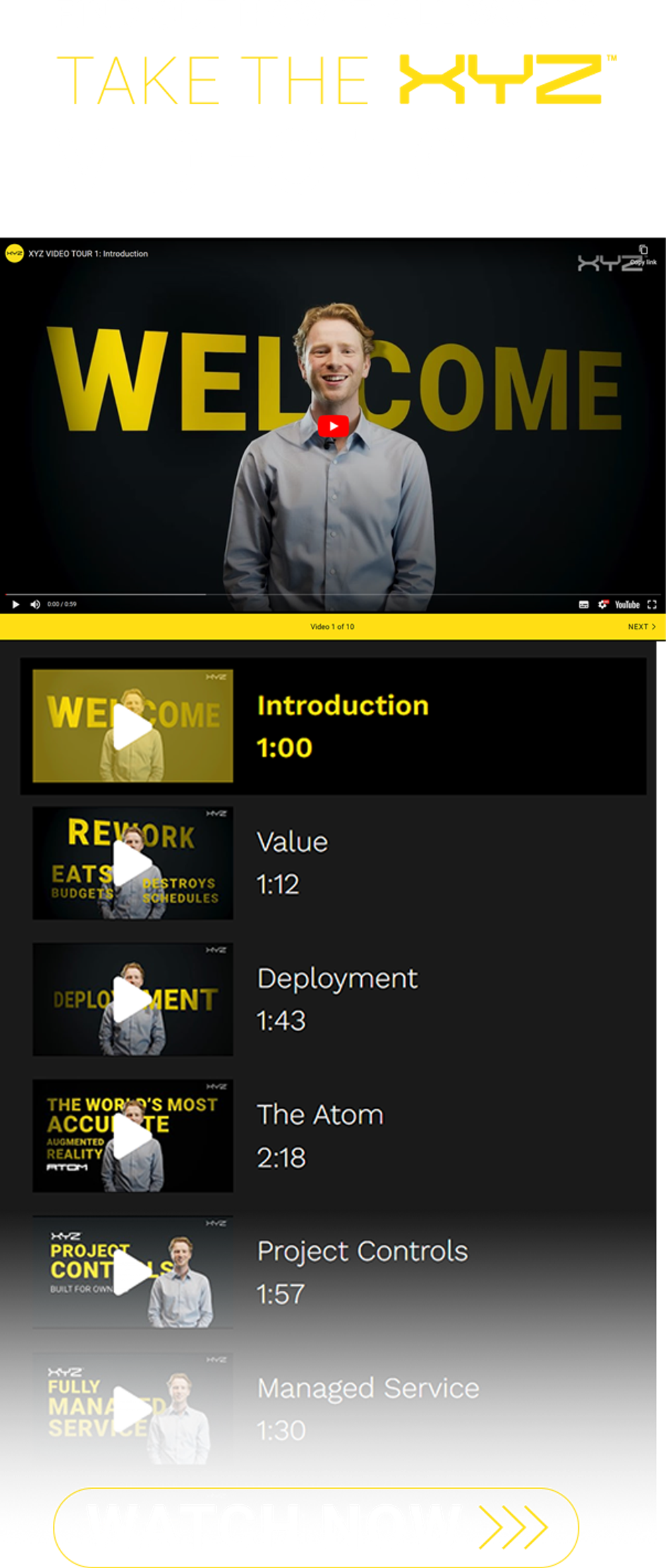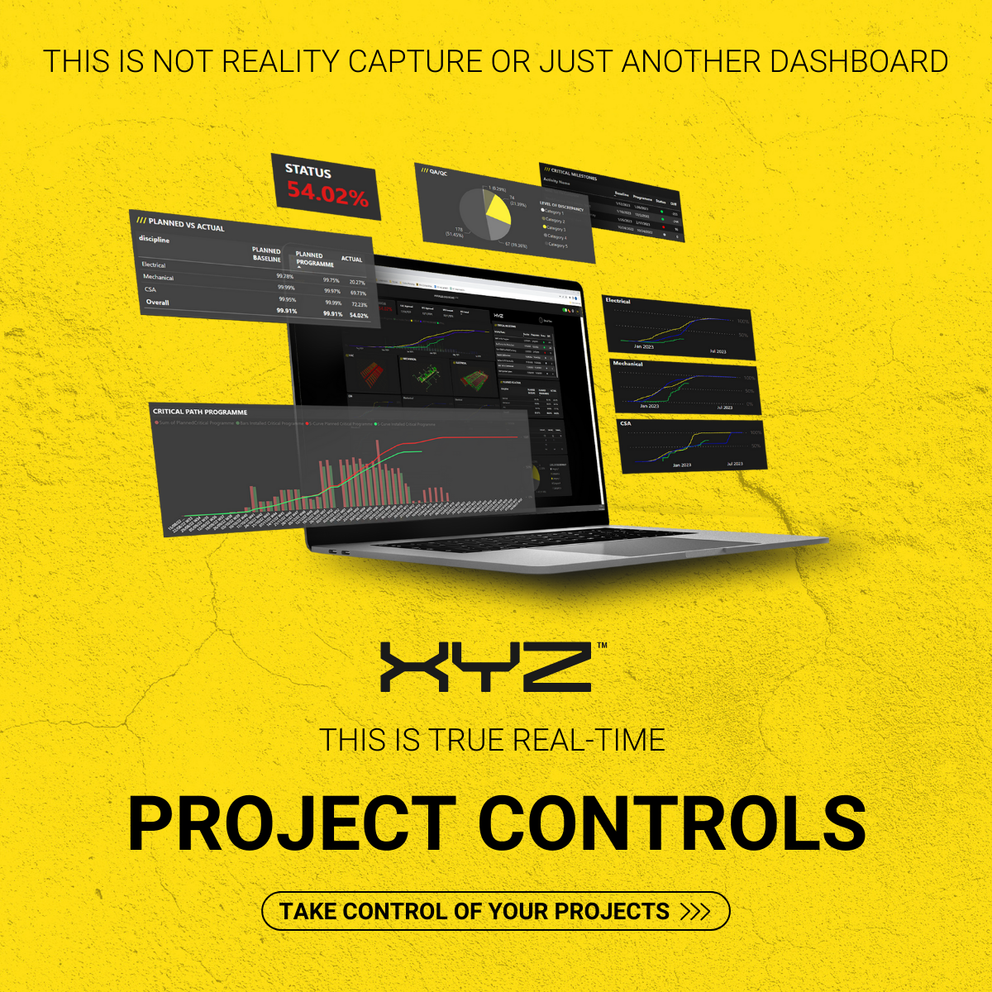-
Services
Services
Find out how we work with our clients and deliver value to construction projects from day one
-
Solutions
Solutions
Discover how all our solutions sync together to deliver construction's most powerful BIM platform to date
-
Built for
Built for
-
Industry
Industry
Understand how we support construction's biggest sectors, and hear from our clients who have experienced the power of XYZ
-
Resources
Resources
Get stuck into all our latest thought leadership, news, reports and industry leading content
-
Company
Company
Dive into what makes XYZ tick, unearth why construction is in our DNA and why we are world leaders in AR solutions

Insights
How to maximize ConTech with a fully managed solution

19 July 2024
Construction, as an industry, has been slower to adopt technology than other sectors. This is no secret, but it is also no fault of the industry itself. It has almost become proverb; ‘construction hasn’t failed to adopt technology. The technology has failed to adapt to construction.’
While other industries allowed their solutions to grow and develop, construction has not had the same tolerance. A product that is not immediately useful, which many early ConTech solutions were not, cannot be used on a construction site because the stakes are too high. The innovators in the industry, of which there have always been many, were let down by these early solutions and remain understandably skeptical.
Augmented Reality (AR) is one such solution that has failed to live up to expectations. As early as 1996, AR was being developed as a tool for construction, bringing the newly emerging 3D models into the field directly. The possibilities that AR could have in the field are so obvious that it has long been a holy grail for construction.
With rework being such an enormous and consistent problem across the industry, building directly from holograms would finally slay the beast, and in doing so get back some of the $625 billion per year that is currently wasted on rework globally. Additionally, AR’s ability to enable real-time progress tracking ensures projects stay on schedule and accelerates programs with insights from the field, providing live data to enable informed decision-making (more detail on that here).
What’s the hold up?
So why hasn’t AR brought about monumental change in the industry? There are several reasons. Initially, the early solutions were proof-of-concept that could not load large models, failed to uphold the level of accuracy required onsite, and could not achieve safety standards. These problems have been solved in two ways, the first being to use mobile devices to display projections, the second being to fit all the hardware and software into a hardhat that is safe for construction purposes (the only example of which is XYZ’s Atom™).
The key problem is combining accessibility with utility. There are plenty of easily accessible solutions on the market, and there are plenty that can provide useful data, but combining the two has proven the great barrier for every techy with a dream so far (see Daqri).
This is a problem that spreads across ConTech, not just AR solutions. Famously, Katerra burned through over $2 billion in funding due to a fundamental misunderstanding of the construction industry. Their fall has served as a cautionary tale to the current generation of start-ups (ironically, the generation that Katerra itself belonged to), but while lessons of financial stability have been heard far and wide, the equally important lesson of assuming construction can be solved the same way as other industries is still working its way through tech solutions.
Construction workers are some of the busiest people on the planet. Any solution that asks more of them is not worth buying. They do not have time to waste on a solution that only provides minimal gains or has a huge learning curve that may have practical applications but is difficult to navigate. Saying, ‘strap this camera to your head and do another site walk,’ is simply not an option for many.
To be clear, people in the industry do want to adopt tech to improve their workflow. Problems that plague the industry, like the labor shortages and supply chain issues can be eased with an effective tool. The options are just not good enough. Many companies have taken to adopting a solution that does just enough to prove value but does not move the needle. They only offer a patchwork to the full problem, and it would take many of these working together to provide real value to a construction site. We often hear from our partners that this ends up becoming shelfware on most projects because it requires too much input to be useful or does not provide immediately actionable information.
Getting the most out of ConTech
Fully managed solutions or services are the answer. Designing a solution with the express goal of delivering actionable insights straight to the hands of construction teams requires a third-party with construction expertise. Expecting additional data collection or software management from project teams themselves is not an acceptable solution, so we need to do the legwork for them.
Integrating AR and real-time project controls into a fully managed solution stitches all the patchwork technologies together into the most complete solution there is for construction. Allowing an expert to take control of the solution ensures that it will be used to its full potential thanks to their intimate knowledge of the systems, taking it from a nice-to-have to a must-have. The only way it can reach this status is through being a fully managed service.
Our partners already feel the benefits of this – live, objective data, AR-backed installations and data capture, and real-time progress and quality tracking to name a few. This has helped to save over 14,000 critical worker days across all deployments and accelerate projects to finish on (or even ahead of) schedule. Time is the most valuable resource the industry has to offer, and fully managed services such as XYZ’s do not deprive teams of their time in deployment and save time when they are active.
Final thoughts
The construction industry is not the dinosaur it is frequently made out to be. In our experience, project teams and owners are extremely excited to discuss and implement new game changing tech that will improve their operations. They have been burned before, though, and it is up to the construction tech industry to win back their trust. For us, that means a fully managed service designed to deliver the information they need right into their hands. And it is working.
Read about how our solution helped accelerate this data center project by 6 weeks.








